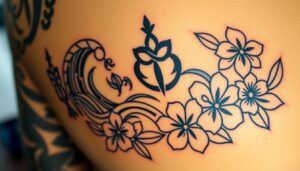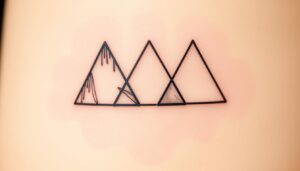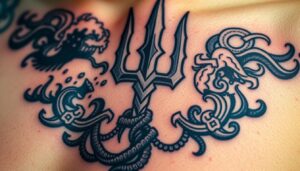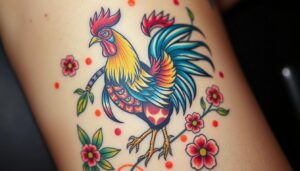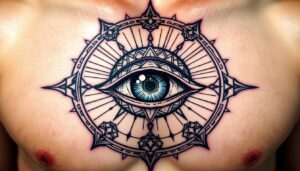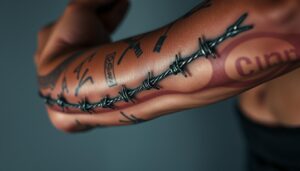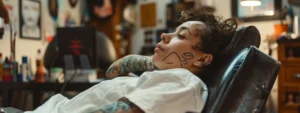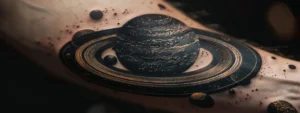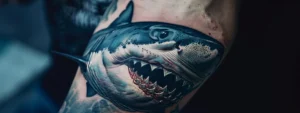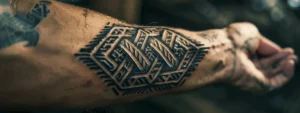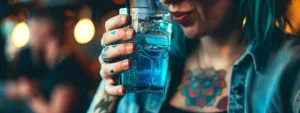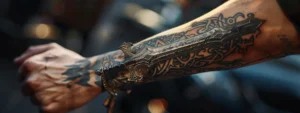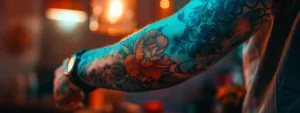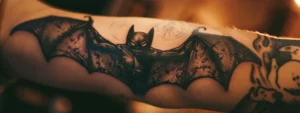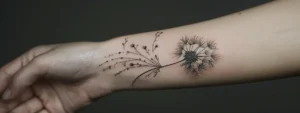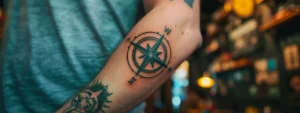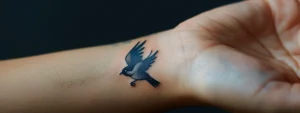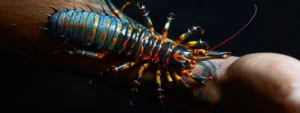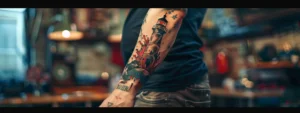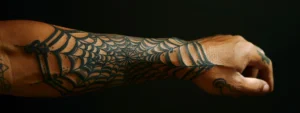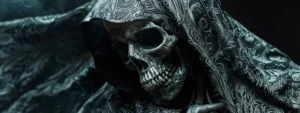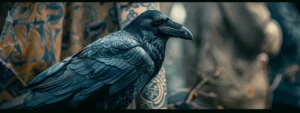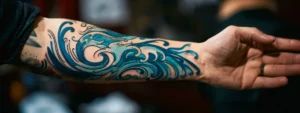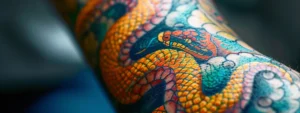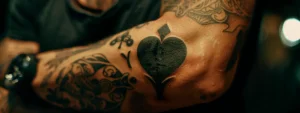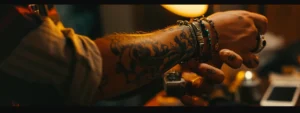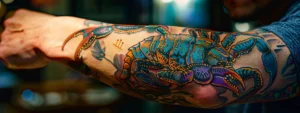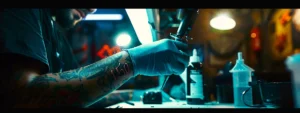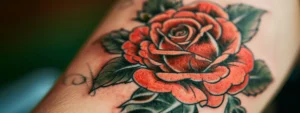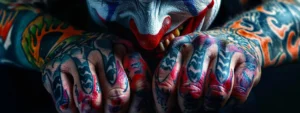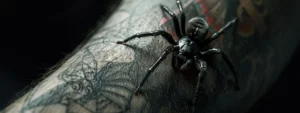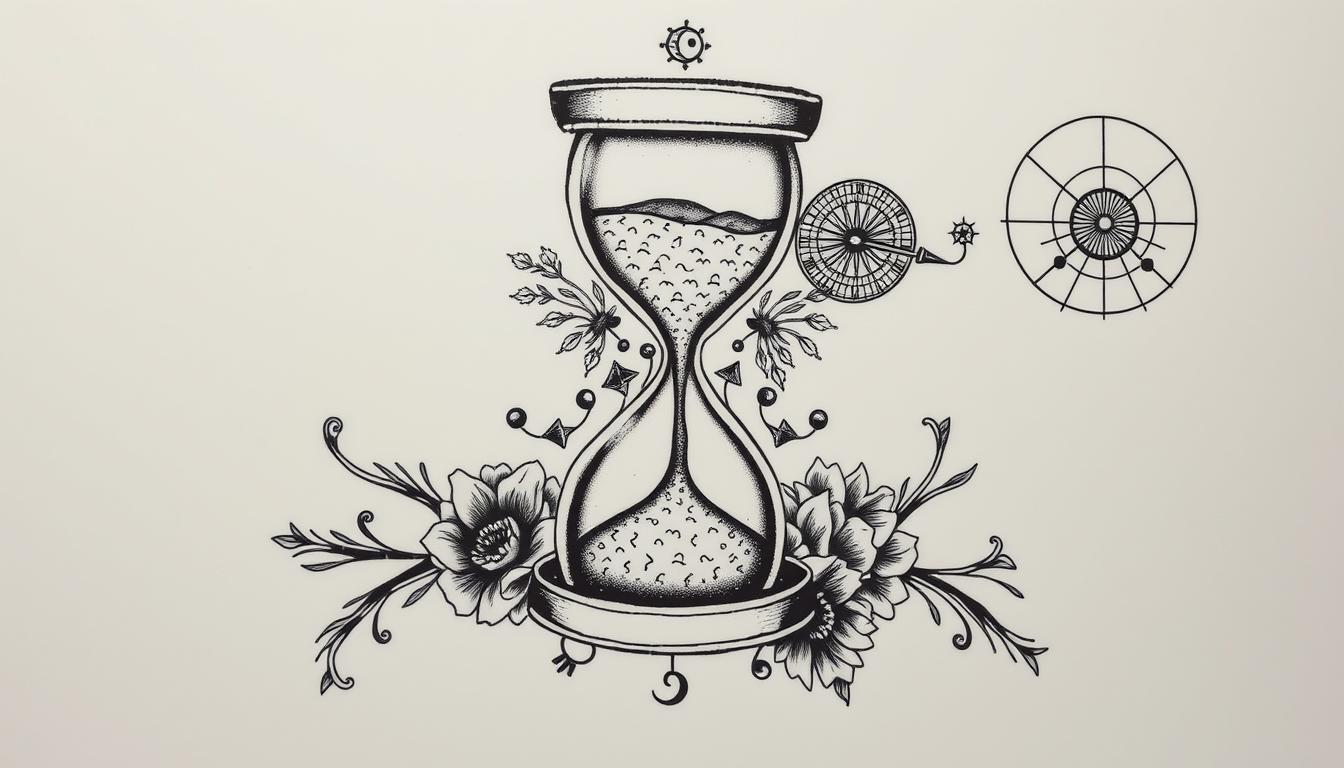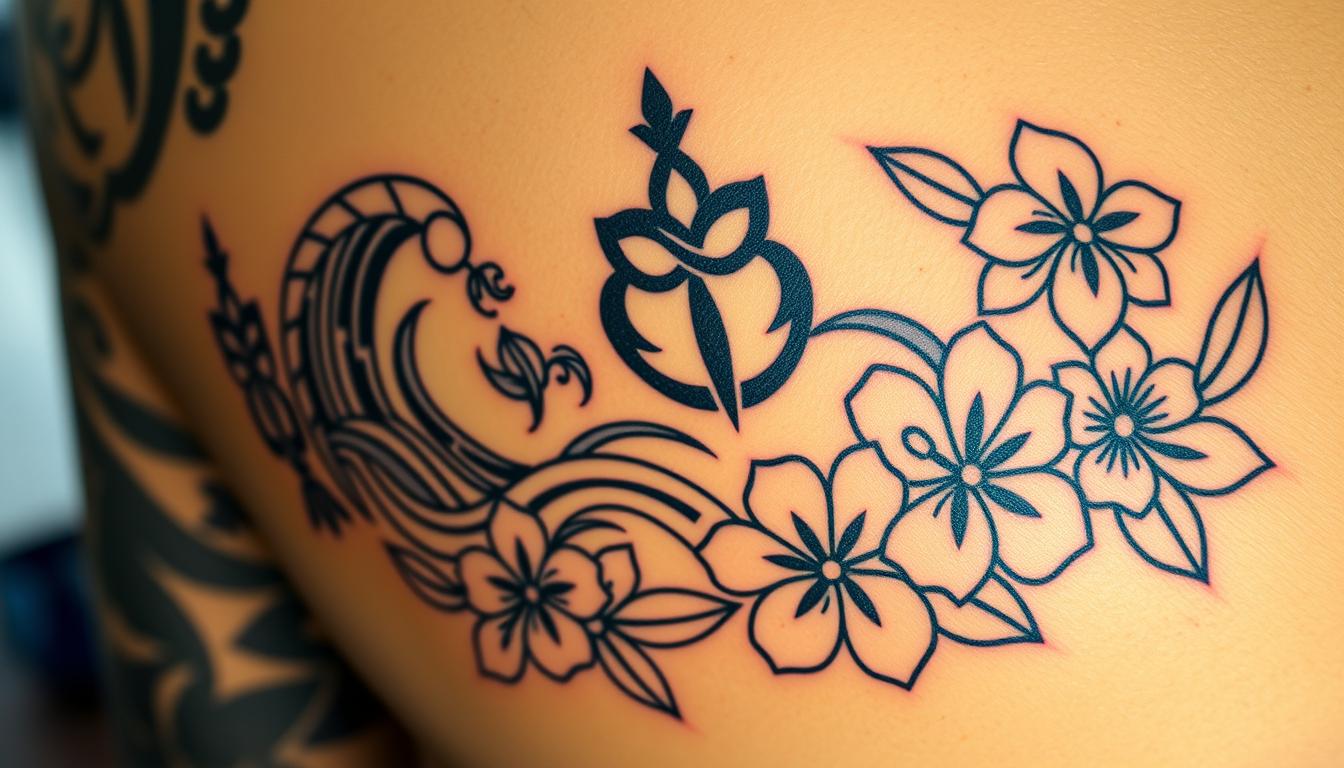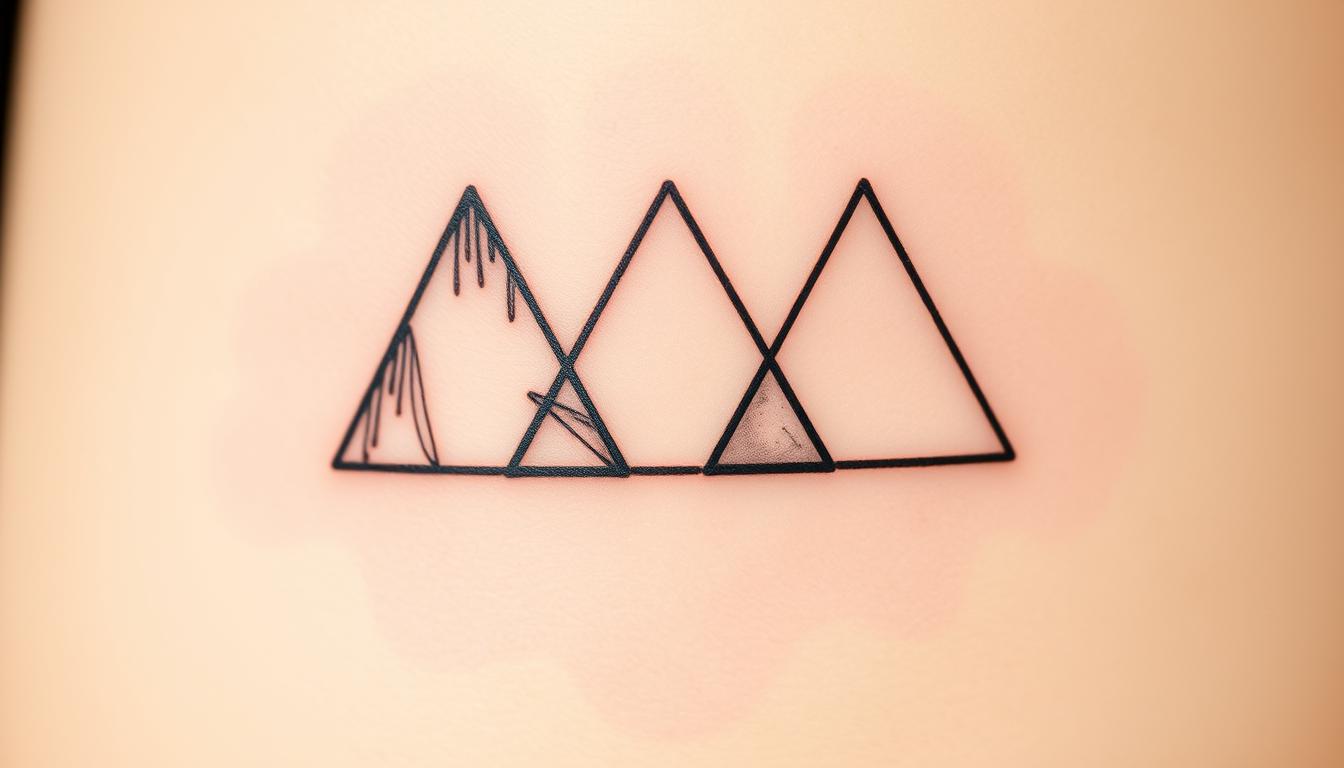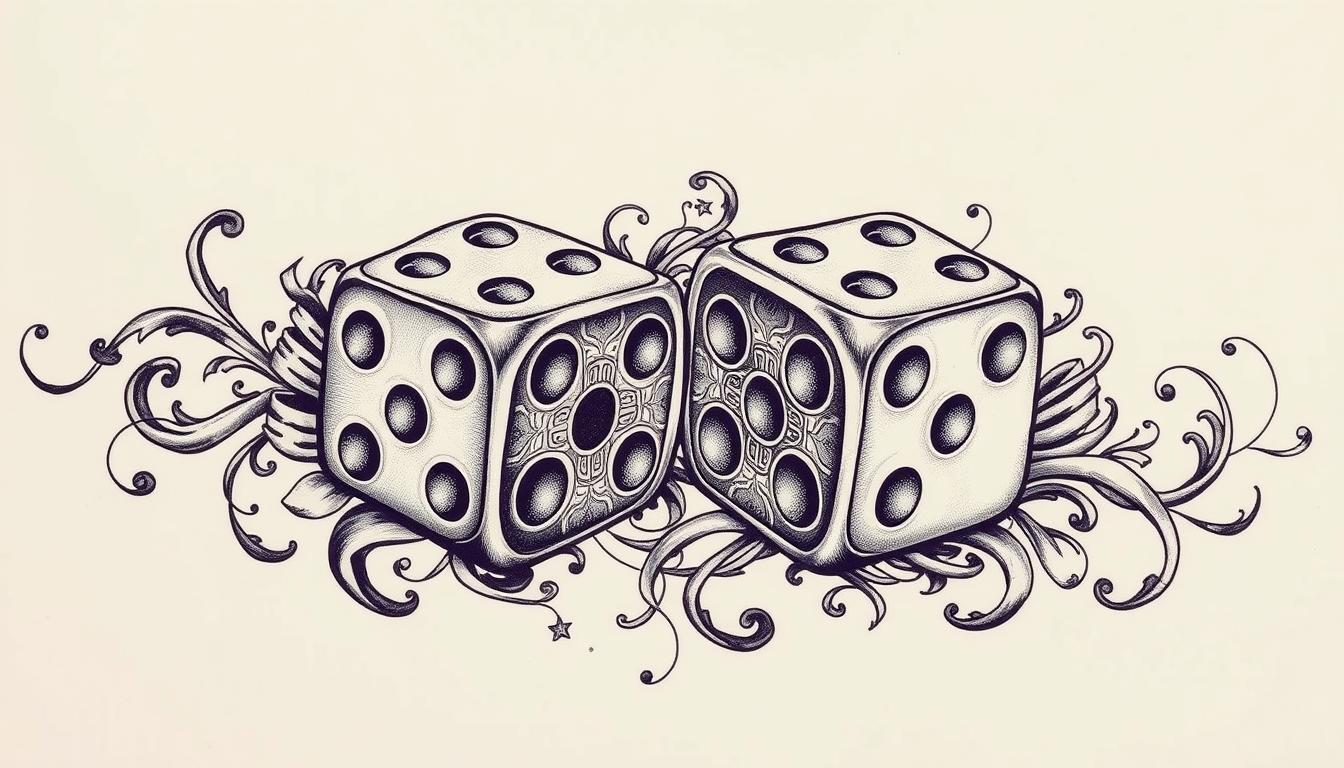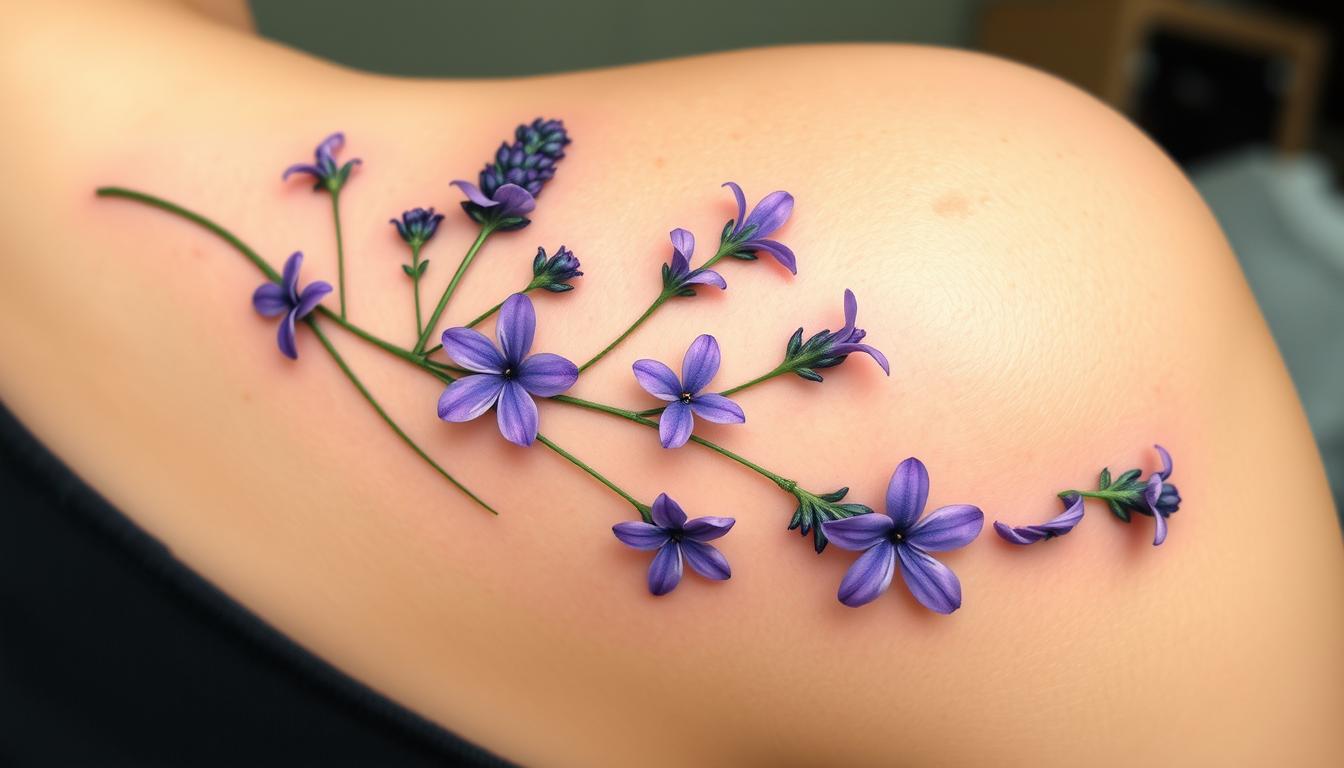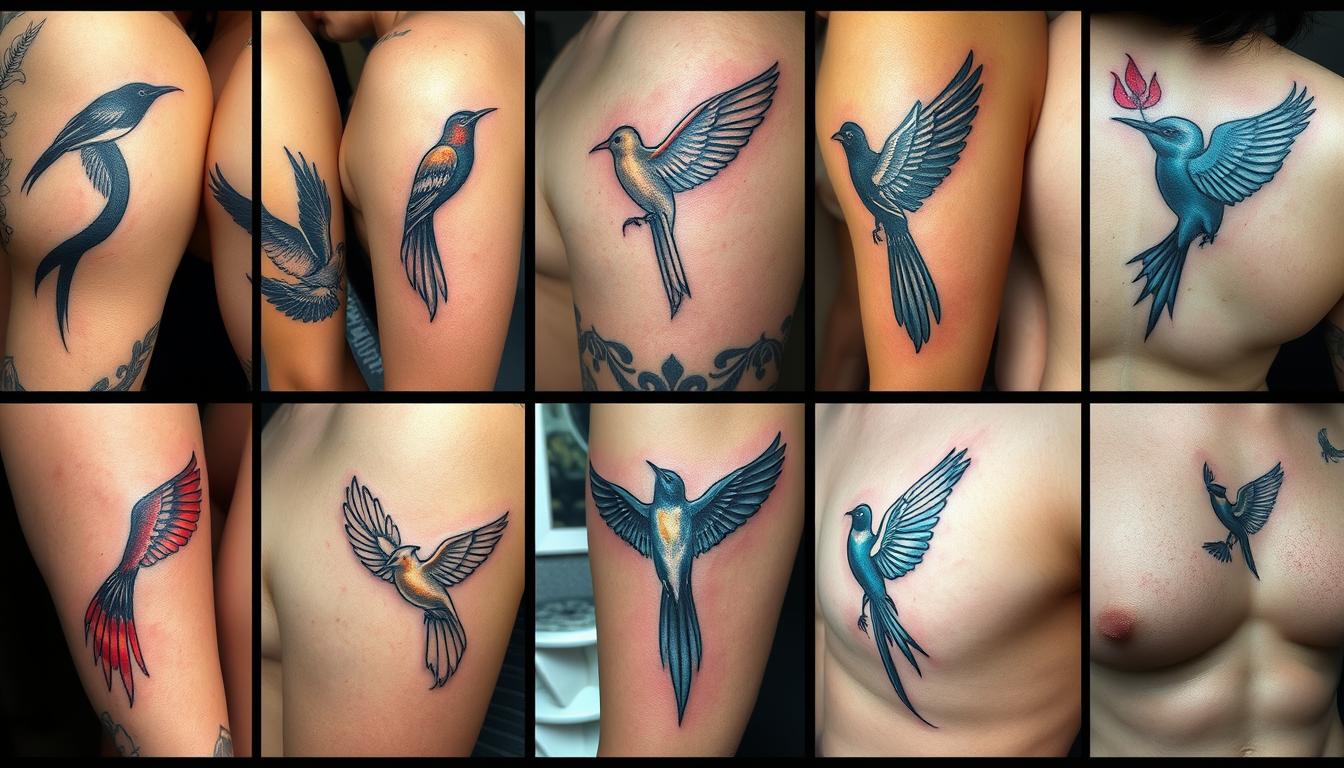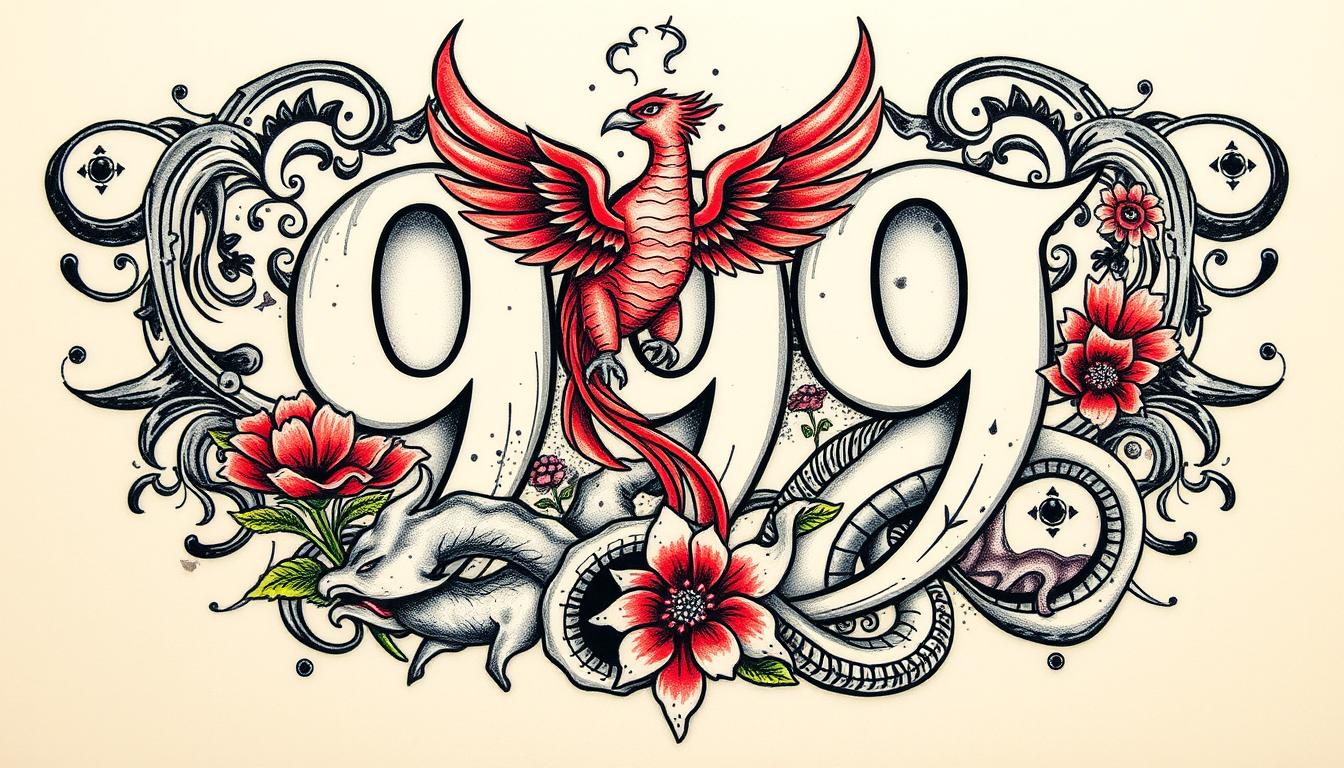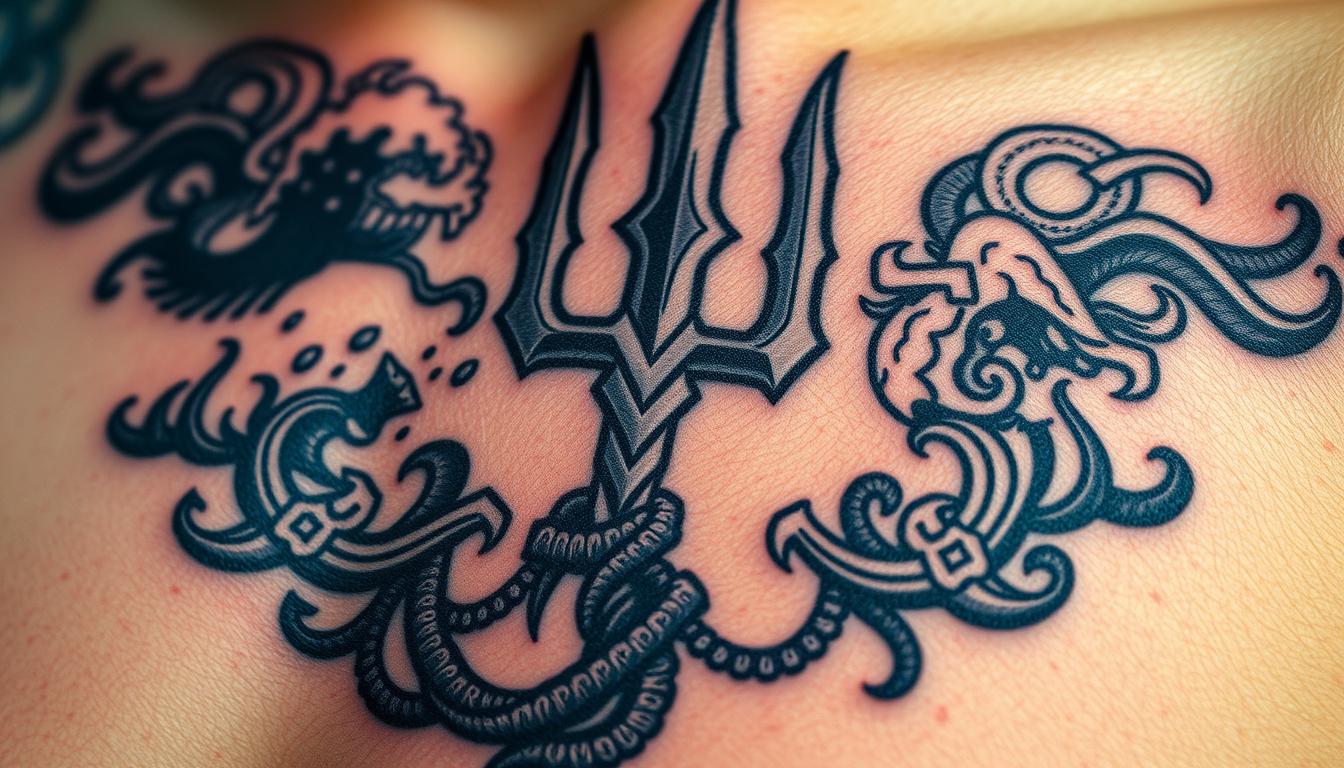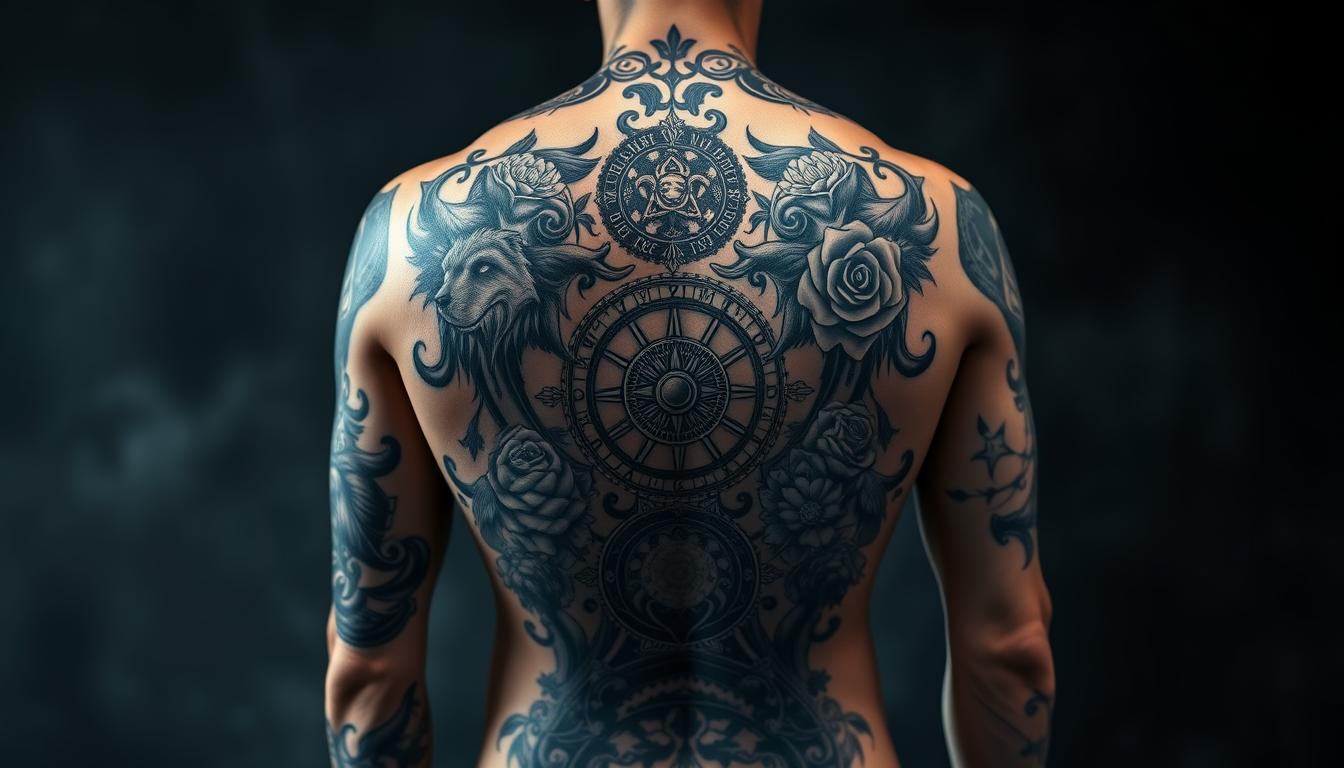Can a tattoo cover scars? Many people with visible scars consider this option to regain confidence or transform their appearance. This article explores the possibility of tattooing over scars, covering types of scars suitable for cover-ups, how to assess scar readiness, and the importance of choosing an experienced artist. We’ll also discuss the tattooing process on scarred skin and provide care tips to ensure optimal healing. Whether you’re looking to cover acne scars or more significant marks, this guide will help you understand the potential and risks of using ink to transform your scars.
Key Takeaways
- Scar tissue affects tattoo ink absorption differently than healthy skin, requiring specialized techniques
- Wait at least one year after injury or surgery for scar maturation before tattooing
- Choose an experienced artist with a portfolio of successful scar cover-up tattoos
- Proper aftercare and sun protection are crucial for maintaining tattoos over scars
- Regular check-ups and touch-ups may be necessary to address fading or uneven healing
Understanding Tattooing Over Scars
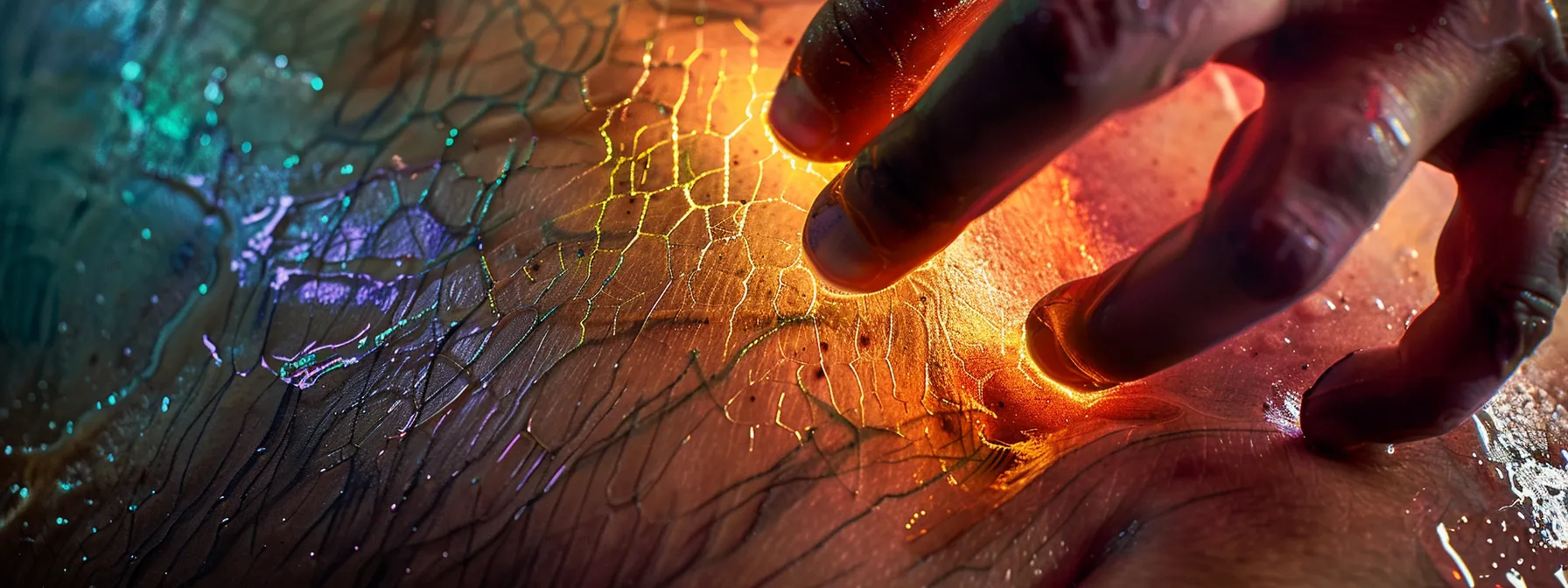
Tattooing over scars involves unique considerations due to differences in skin texture and composition. This section explores how scar tissue affects tattooing, contrasts scarred and healthy skin, and examines ink interaction with scarred areas. Understanding these factors is crucial for successful scar camouflage, especially on areas like the abdomen after surgery. Proper skin care and knowledge of connective tissue are essential for optimal results.
How Scar Tissue Affects Tattooing
Scar tissue significantly impacts the tattooing process due to its altered structure and composition. Dermatologists explain that scars, whether from injuries, burns, or keloids, have a different cellular makeup and collagen arrangement compared to healthy skin. This difference affects how the tattoo needle penetrates the skin and how ink is retained, often requiring specialized techniques and multiple sessions for optimal coverage and color saturation.
Differences Between Scars and Healthy Skin
Scars and healthy skin differ significantly in their structure and composition, affecting the tattooing process. Scar tissue often lacks the elasticity and regular collagen arrangement found in healthy skin, which can impact ink absorption and retention. Medical tattoo artists and dermatologists note that scars may require different techniques, such as adjusting needle depth or using specialized inks, to achieve desired results. In cases of severe scarring or atrophy, laser treatments prior to tattooing might be necessary to improve skin texture and enhance the tattoo’s appearance.
Tattoo Ink Interaction With Scarred Areas
Tattoo ink interacts differently with scarred areas compared to healthy skin, affecting pigment retention and overall healing. Scarred tissue may absorb ink inconsistently, leading to potential color variations or fading. Tattoo artists must consider the scar’s texture and depth when applying ink to ensure proper pigment placement and minimize pain. Health considerations are paramount, as scarred skin may be more susceptible to complications or disease. Cancer survivors should consult their healthcare providers before tattooing over surgical scars to ensure it won’t interfere with future screenings or treatments. Key factors influencing ink interaction with scars include:
- Scar tissue density and elasticity
- Age and type of scar
- Ink composition and quality
- Tattooing technique and equipment
- Aftercare and healing process
Types of Scars Suitable for Tattoo Cover-Ups
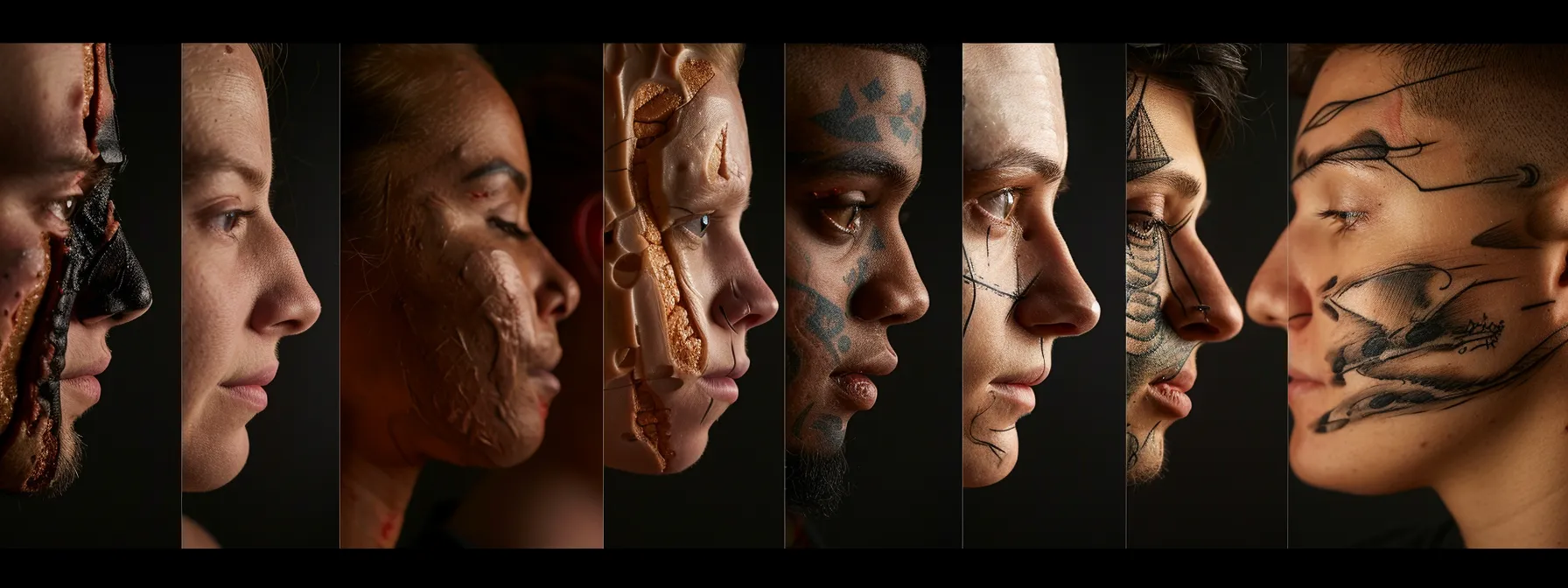
Different types of scars present unique challenges for tattoo artists. Surgical scars, accident injuries, stretch marks, burn scars, and keloid scars each require specific approaches. Factors like tissue healing and scar maturity influence tattooing success. Understanding these variations helps determine suitable cover-up techniques and ensures safe, effective results for various scar types.
Surgical Scars
Surgical scars, characterized by their clean, linear appearance, often present favorable conditions for tattooing. These scars typically form predictable collagen patterns, making them suitable candidates for tattoo cover-ups. Many individuals seek to conceal surgical scars on their skin through tattoos, not only for aesthetic reasons but also to support their mental health. Tattoo artists can effectively work with surgical scars, adapting their techniques to the unique texture of the healed human skin. The success of tattooing over surgical scars depends on factors such as the scar’s age, depth, and overall skin condition.
Accident or Injury Scars
Accident or injury scars present unique challenges for tattoo cover-ups due to their often irregular shape and texture. These scars, which may include hypertrophic scars resulting from excessive collagen production during the healing process, require careful assessment by experienced tattoo artists. The degree of inflammation and the extent of wound healing play crucial roles in determining the suitability for tattooing. Artists must consider the scar’s age, depth, and flexibility when designing cover-ups, often incorporating the scar’s shape into the tattoo design for optimal results:
| Scar Type | Characteristics | Tattoo Considerations |
|---|---|---|
| Hypertrophic | Raised, red, confined to injury site | May require flattening treatments before tattooing |
| Atrophic | Sunken, pitted appearance | Challenging for ink retention, may need multiple sessions |
| Contracture | Tightened skin, often from burns | Requires specialized techniques, potential skin grafting |
Stretch Marks and Tattoo Possibilities
Stretch marks, characterized by linear atrophic scars, present unique challenges for tattoo artists. While tattooing over stretch marks is possible, the success depends on factors such as the age, color, and depth of the marks. Experienced tattoo artists can effectively incorporate stretch marks into designs, using techniques that blend the scar tissue with surrounding skin. However, clients should be aware that the tattoo may appear different on stretched skin compared to normal skin, and multiple sessions may be necessary for optimal coverage.
Burn Scars and Tattooing Considerations
Burn scars present unique challenges for tattooing due to their complex texture and compromised skin integrity. Tattoo artists must carefully assess the scar’s depth, elasticity, and overall health before proceeding. Successful tattooing over burn scars often requires specialized techniques, such as adjusting needle depth and using specific ink formulations. It’s crucial for clients to understand that results may vary depending on the severity of the burn and the healing process. Factors to consider when tattooing over burn scars include:
- Scar thickness and texture
- Skin sensitivity and pain tolerance
- Potential for ink migration or uneven absorption
- Need for multiple sessions to achieve desired coverage
- Importance of aftercare to prevent complications
Keloid Scars and Tattoo Safety
Tattooing over keloid scars requires careful consideration due to the risk of triggering further keloid formation. Dermatologists and experienced tattoo artists advise against tattooing directly on keloid scars, as the trauma from the needle can exacerbate the condition. Individuals prone to keloid formation should consult with a medical professional before attempting any tattoo cover-up. In some cases, alternative scar camouflage techniques may be more suitable for keloid scars, prioritizing safety and minimizing the risk of complications.
Assessing if Your Scar Is Ready for Tattooing
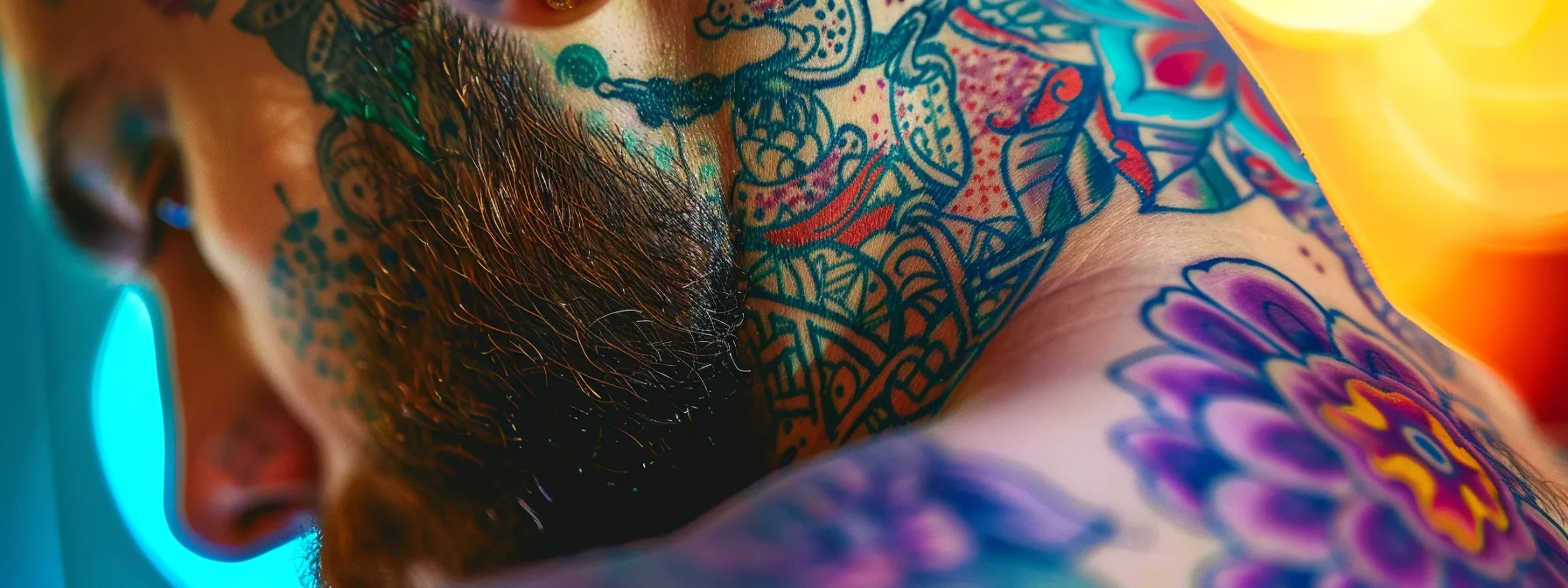
Determining if a scar is ready for tattooing involves several critical factors. This section examines the necessary waiting period for scar maturation, signs of sufficient healing, and the importance of professional medical consultation. Understanding these aspects helps ensure safe and effective scar cover-ups through tattooing.
Waiting Period for Scar Maturation
The waiting period for scar maturation is crucial before attempting to tattoo over a scar. Experts recommend waiting at least one year after the initial injury or surgery for proper healing and collagen remodeling. This timeline allows the scar to stabilize, reducing the risk of complications during tattooing. However, individual healing rates vary, and some scars may require longer periods to mature fully:
| Scar Type | Minimum Waiting Period | Optimal Waiting Period |
|---|---|---|
| Surgical Incision | 12 months | 18-24 months |
| Burn Scar | 18 months | 24-36 months |
| Trauma Scar | 12-18 months | 24 months |
Signs Your Scar Has Healed Enough
Determining if a scar has healed sufficiently for tattooing involves assessing several key indicators. The scar should appear flat, smooth, and have a consistent color with the surrounding skin. Flexibility and elasticity of the scarred area are crucial, as rigid or tight scars may not retain ink well. Absence of redness, itching, or discomfort indicates complete healing. Tattoo artists and dermatologists recommend that the scar should maintain its appearance for several months without changes before considering it ready for tattooing.
Consulting a Healthcare Professional
Consulting a healthcare professional is essential before tattooing over scars. A dermatologist or plastic surgeon can assess the scar’s readiness, considering factors like tissue health, potential complications, and individual healing patterns. They may recommend treatments to improve the scar’s condition prior to tattooing or advise against the procedure if risks outweigh benefits. Key aspects a healthcare professional will evaluate include:
- Scar maturity and stability
- Skin sensitivity and potential allergic reactions
- Risk of keloid formation or hypertrophic scarring
- Underlying medical conditions affecting healing
- Potential impact on future medical treatments or examinations
Choosing the Right Tattoo Artist for Scar Cover-Ups
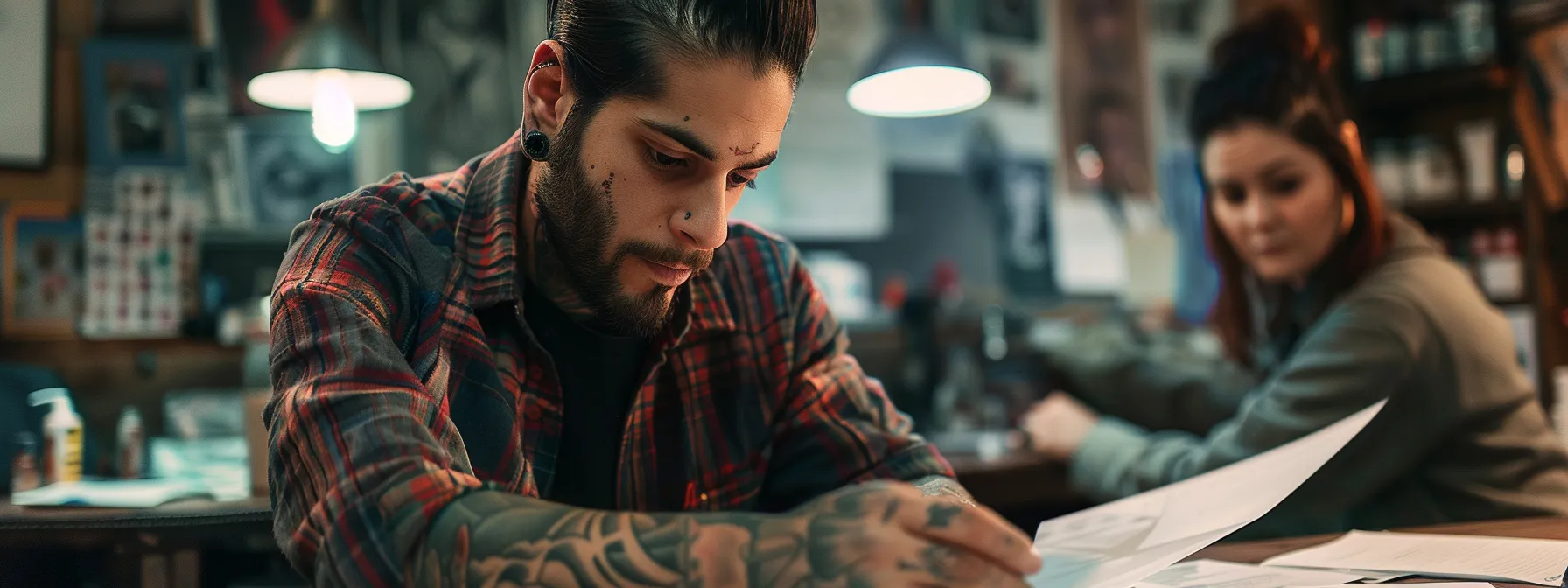
Selecting a skilled tattoo artist is crucial for successful scar cover-ups. This section explores the importance of experience with scarred skin, reviewing portfolios, asking key questions during consultations, and collaborating on designs that complement scars. Understanding these aspects helps ensure optimal results when tattooing over scars.
Importance of Experience With Scarred Skin
Experience with scarred skin is crucial for tattoo artists performing scar cover-ups. Artists who specialize in this technique understand the unique challenges of working with altered skin texture and can adapt their methods accordingly. They possess knowledge of how different scar types interact with ink and can adjust needle depth, pressure, and ink selection to achieve optimal results. Experienced artists also assess scar readiness and can provide realistic expectations for the final outcome. Clients seeking scar cover-ups should prioritize artists with a proven track record in this specialized field:
- Familiarity with various scar types and textures
- Expertise in adapting tattooing techniques for scarred skin
- Understanding of ink behavior in different scar tissues
- Ability to create designs that complement or camouflage scars
- Knowledge of potential complications and how to mitigate risks
Reviewing Portfolios of Scar Cover-Up Work
Reviewing portfolios of scar cover-up work is essential when selecting a tattoo artist for this specialized procedure. Potential clients should examine before-and-after photos of scar cover-ups, paying attention to the artist’s ability to blend the tattoo seamlessly with the surrounding skin. A skilled artist’s portfolio will showcase a range of scar types and creative solutions, demonstrating their expertise in working with challenging skin textures and incorporating scars into aesthetically pleasing designs.
Questions to Ask During Your Consultation
During consultations for scar cover-up tattoos, clients should ask specific questions to assess the artist’s expertise and approach. Key inquiries include the artist’s experience with similar scar types, their technique for working with scarred skin, and potential risks or limitations. Clients should also discuss design options that complement their scars, expected outcomes, and the number of sessions required. Here’s a list of essential questions to consider:
| Question Category | Specific Questions |
|---|---|
| Experience | How many scar cover-ups have you done? Can you show examples? |
| Technique | How do you adapt your approach for scarred skin? |
| Design | What designs work best to conceal my type of scar? |
| Risks | What are the potential complications with my scar? |
| Process | How many sessions will I need? What’s the healing process like? |
Collaborating on a Design That Fits Your Scar
Collaborating on a design that fits a scar requires open communication between the client and tattoo artist. The artist should assess the scar’s texture, size, and location to suggest designs that effectively incorporate or camouflage it. Clients should express their preferences and concerns, while remaining open to the artist’s expertise in creating visually appealing cover-ups. This collaborative process often involves sketching multiple concepts and discussing how each design interacts with the scar, ensuring the final tattoo complements the client’s body and addresses their aesthetic goals.
The Tattooing Process on Scarred Skin
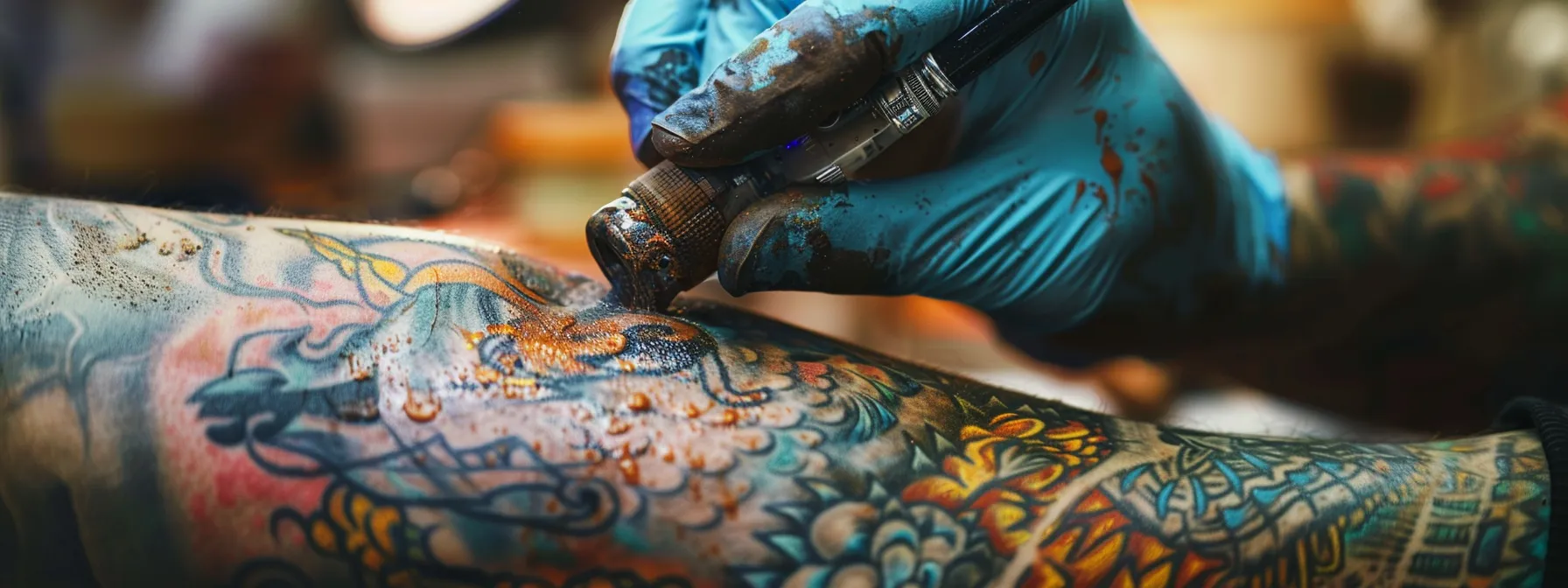
Tattooing over scars requires specialized techniques and considerations. This section explores the preparation process, specific methods used for scarred skin, pain management strategies, and healing expectations. Understanding these aspects helps clients navigate the unique challenges of scar cover-up tattoos and achieve optimal results.
Preparing for Your Tattoo Session
Preparing for a tattoo session on scarred skin requires careful planning and communication with the artist. Clients should thoroughly cleanse the area and avoid applying lotions or oils prior to the appointment. The tattoo artist may recommend specific pre-session care instructions tailored to the scar type and location. It’s crucial to discuss any concerns or sensitivities with the artist beforehand to ensure a comfortable experience. Key preparation steps include:
- Hydrating the skin in the days leading up to the session
- Avoiding sun exposure or tanning to prevent skin irritation
- Informing the artist of any medications that may affect healing
- Wearing comfortable, loose-fitting clothing that allows easy access to the tattoo area
- Eating a nutritious meal and staying hydrated before the appointment
Techniques Used for Tattooing Over Scars
Tattoo artists employ specialized techniques when working on scarred skin to achieve optimal results. They often adjust needle depth and angle to accommodate the varying textures of scar tissue, ensuring proper ink penetration and retention. Some artists use a technique called “color layering” to build up pigment gradually, compensating for the scar’s uneven surface. Additionally, they may incorporate the scar’s shape into the design, using strategic shading and color placement to blend it seamlessly with the surrounding skin.
Managing Pain and Sensation Differences
Managing pain and sensation differences during scar tattooing requires a tailored approach. Scarred areas often have altered nerve sensitivity, which can result in varied pain levels during the tattooing process. Tattoo artists typically adjust their techniques, using gentler pressure or more frequent breaks to accommodate these differences. Some clients may experience heightened sensitivity in certain areas of the scar, while others may have reduced sensation. Pain management strategies, such as numbing creams or focused breathing techniques, can help clients cope with discomfort during the session.
What to Expect During Healing
The healing process for tattoos over scars may differ from that of tattoos on unscarred skin. Clients should expect longer healing times and potentially more pronounced scabbing due to the altered skin texture. The tattoo artist will provide specific aftercare instructions tailored to the scar type and location. Proper healing is crucial for optimal results, and clients should follow these guidelines closely:
- Keep the area clean and dry
- Apply recommended ointments as directed
- Avoid scratching or picking at scabs
- Protect the tattoo from direct sunlight
- Attend follow-up appointments for touch-ups if needed
Care Tips for Tattoos Over Scars
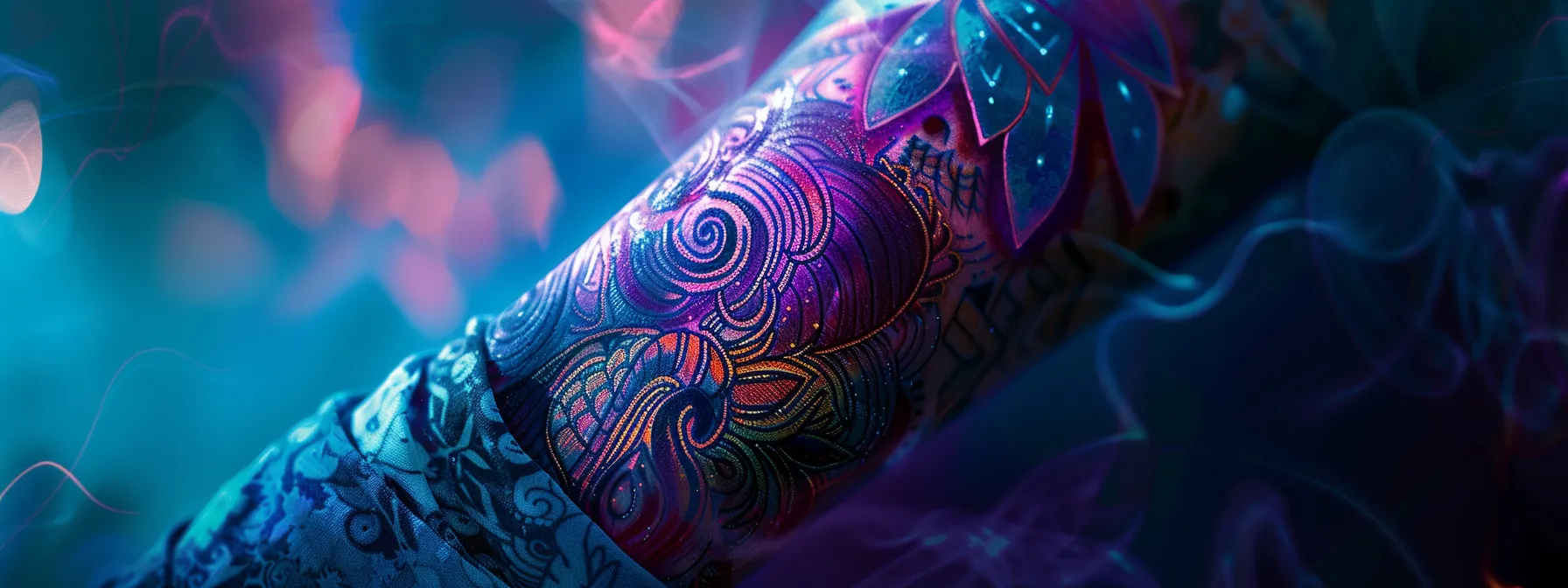
Proper care is crucial for tattoos over scars. This section covers essential aftercare practices for optimal healing, how to monitor for complications, long-term maintenance techniques, and strategies to protect the tattoo from sun exposure. Following these guidelines helps ensure the best possible outcome for scar cover-up tattoos.
Aftercare Practices for Optimal Healing
Proper aftercare is crucial for the optimal healing of tattoos over scars. Tattoo artists recommend gently washing the area with unscented soap and lukewarm water, patting it dry with a clean towel, and applying a thin layer of fragrance-free moisturizer. Clients should avoid soaking the tattoo, exposing it to direct sunlight, or engaging in activities that cause excessive sweating during the initial healing phase. It’s essential to follow the specific aftercare instructions provided by the artist, as these may be tailored to address the unique needs of scarred skin.
Monitoring for Complications
Monitoring for complications is essential when tattooing over scars. Clients should watch for signs of infection, such as increased redness, swelling, or discharge, and report these to their tattoo artist or healthcare provider immediately. Scarred skin may heal differently than unscarred areas, so clients should pay close attention to any unusual changes in texture, color, or sensation. If the tattoo appears to be healing unevenly or if scabs persist longer than expected, professional evaluation may be necessary to ensure proper healing and prevent long-term issues with the tattoo’s appearance.
Long-Term Maintenance of Your Tattoo
Long-term maintenance of tattoos over scars requires consistent care and attention. Clients should protect the tattoo from sun exposure by using high-SPF sunscreen and covering the area when outdoors for extended periods. Regular moisturizing helps maintain skin elasticity and tattoo vibrancy. Periodic touch-ups may be necessary to address any areas where ink has faded or settled unevenly in the scar tissue. Clients should schedule annual check-ups with their tattoo artist to assess the tattoo’s condition and address any concerns promptly:
| Maintenance Task | Frequency | Purpose |
|---|---|---|
| Sun Protection | Daily | Prevent fading and skin damage |
| Moisturizing | Daily | Maintain skin elasticity |
| Artist Check-up | Annually | Assess tattoo condition |
| Touch-ups | As needed | Address fading or unevenness |
Protecting Your Tattoo From Sun Exposure
Protecting tattoos over scars from sun exposure is crucial for maintaining their appearance and integrity. Individuals should apply a broad-spectrum sunscreen with a high SPF to the tattooed area daily, even on cloudy days. For extended outdoor activities, covering the tattoo with clothing or bandages provides additional protection. Sun exposure can cause fading and distortion of tattoo pigments, particularly in scar tissue, which may already have altered pigmentation. Regular sun protection helps preserve the tattoo’s vibrancy and prevents further damage to the scarred skin.
Conclusion
Tattooing over scars is indeed possible, offering a transformative option for individuals seeking to conceal or enhance their scars through artistic expression. The process requires careful consideration of scar type, healing duration, and collaboration with experienced tattoo artists who specialize in working with scarred skin. Proper preparation, specialized techniques, and diligent aftercare are essential for achieving optimal results and minimizing potential complications. Ultimately, scar cover-up tattoos can provide not only aesthetic improvement but also emotional healing, empowering individuals to reclaim their bodies and boost their confidence.









